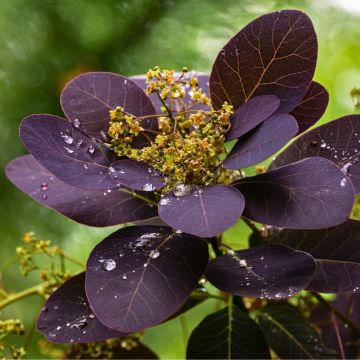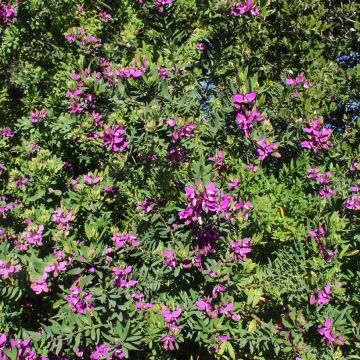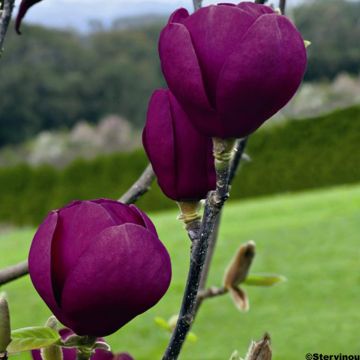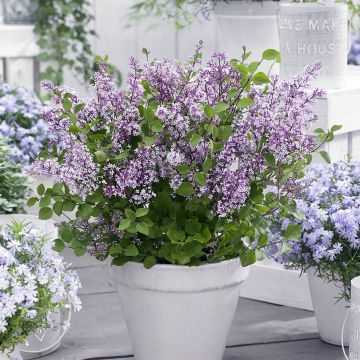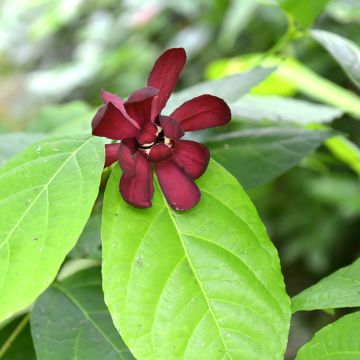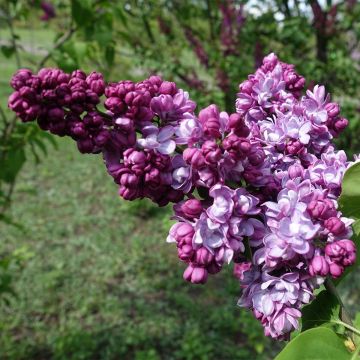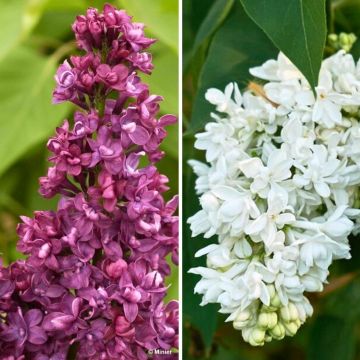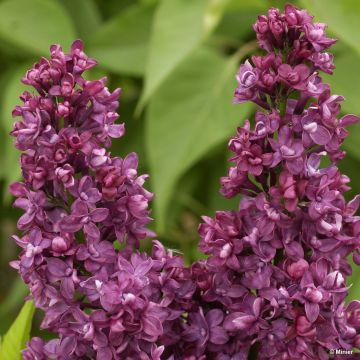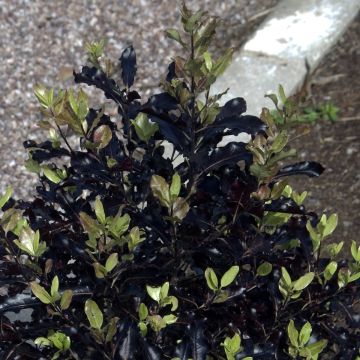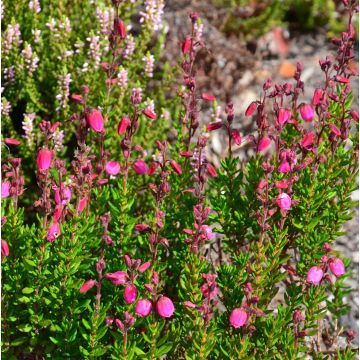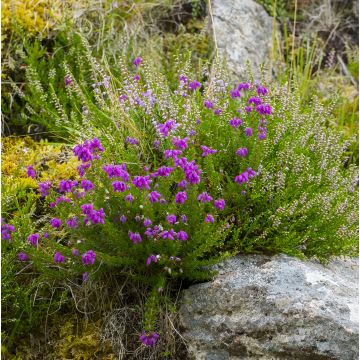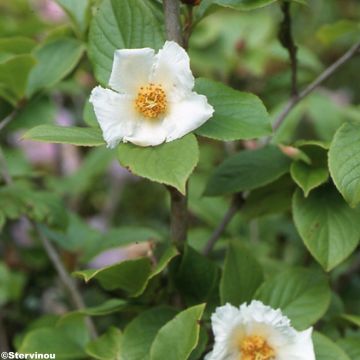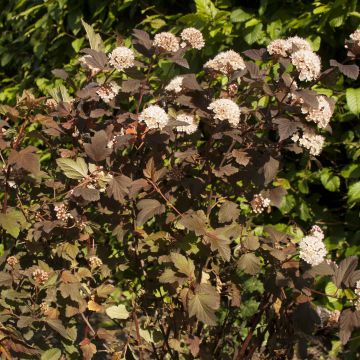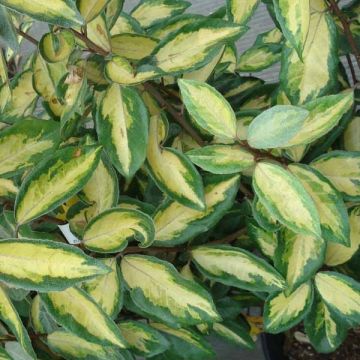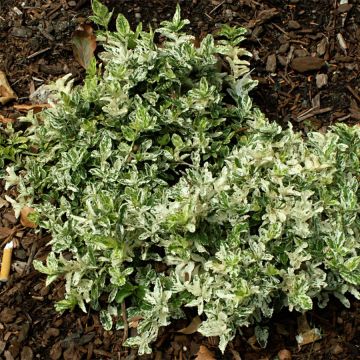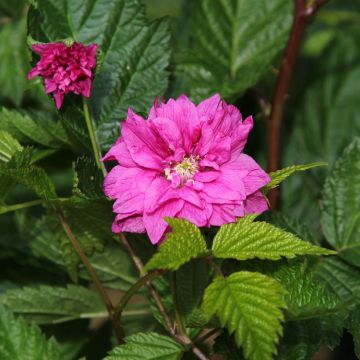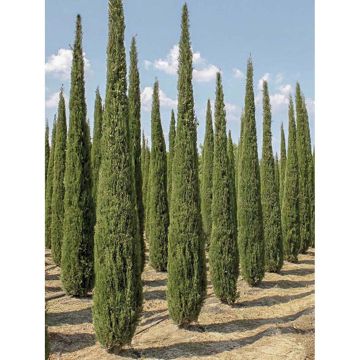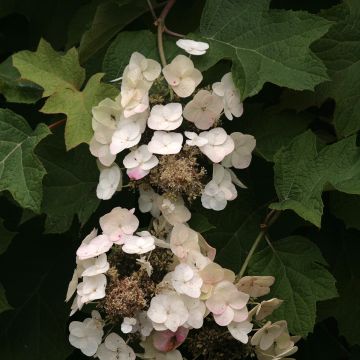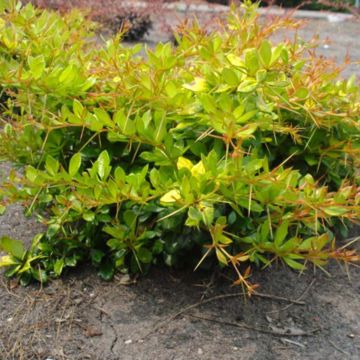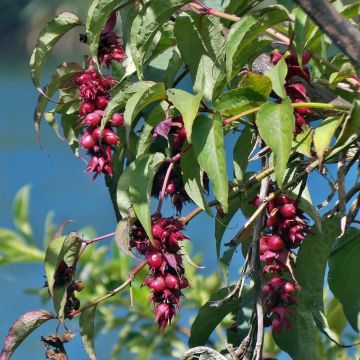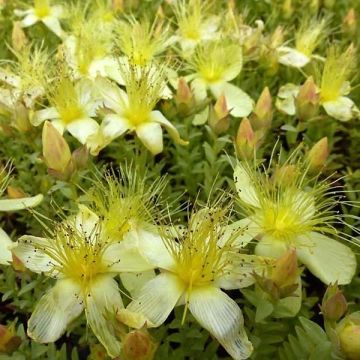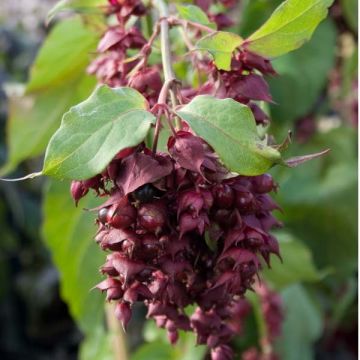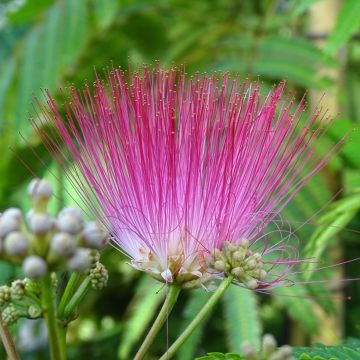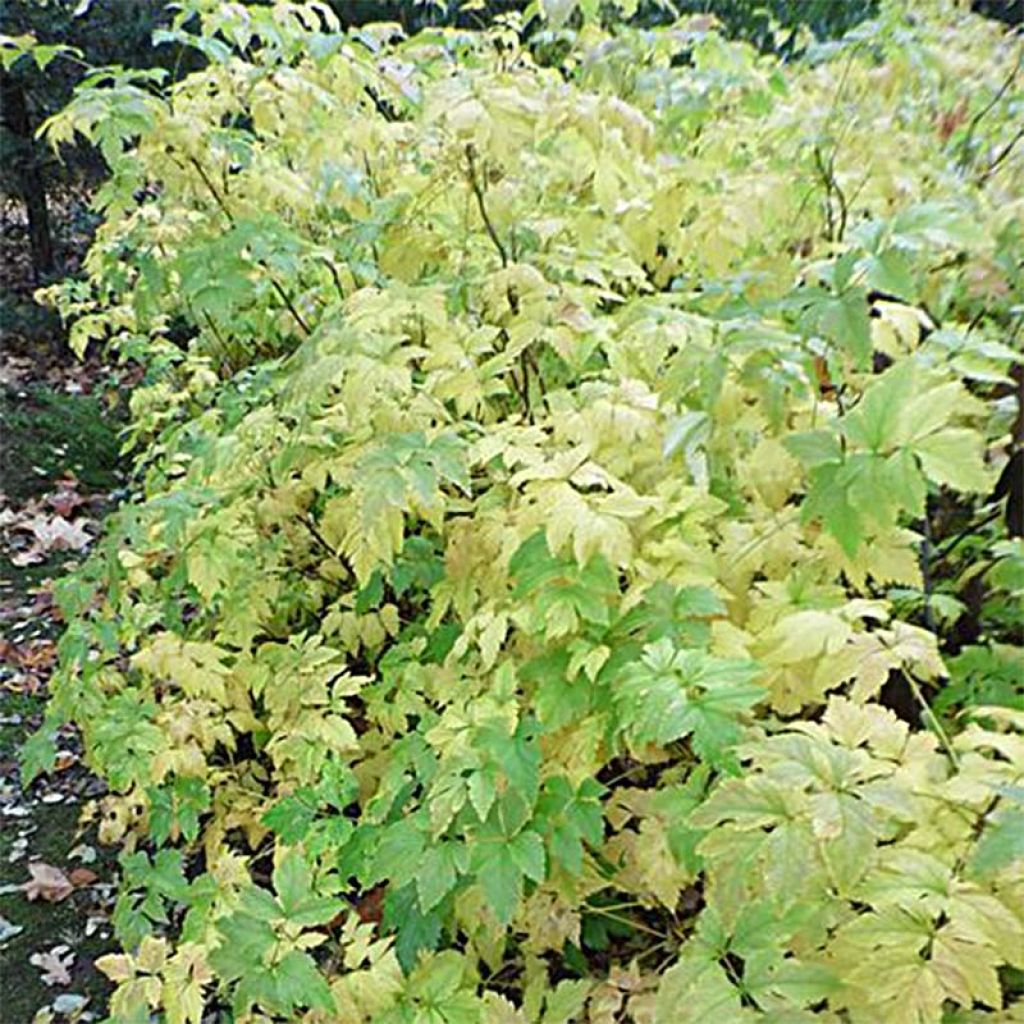

Xanthorhiza simplicissima
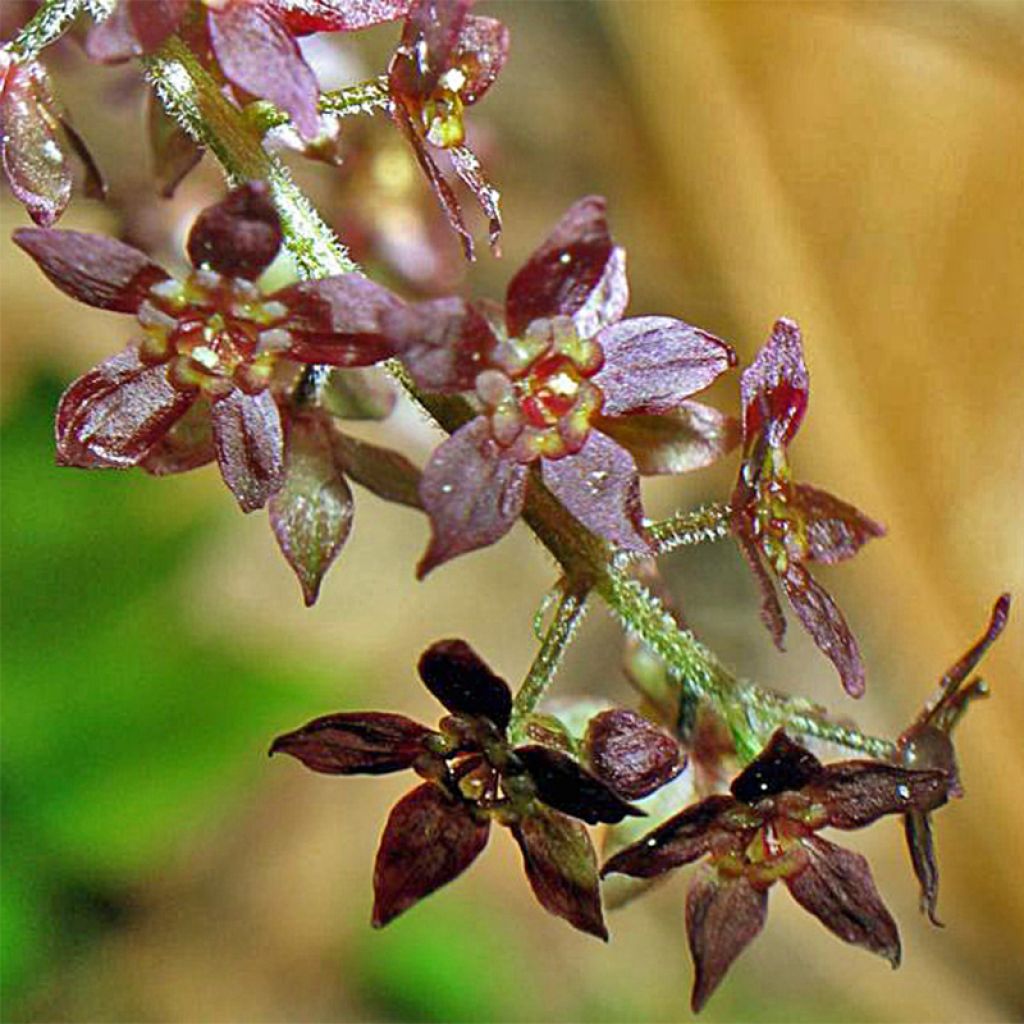

Xanthorhiza simplicissima
Xanthorhiza simplicissima
Xanthorhiza simplicissima
Yellow Root
Why not try an alternative variety in stock?
View all →This plant carries a 24 months recovery warranty
More information
We guarantee the quality of our plants for a full growing cycle, and will replace at our expense any plant that fails to recover under normal climatic and planting conditions.
From €5.90 for pickup delivery and €6.90 for home delivery
Express home delivery from €8.90.
Does this plant fit my garden?
Set up your Plantfit profile →
Description
Xanthorrhiza simplicissima, also known as 'Yellow Root', is a hardy shrub native to the eastern United States, a curious woody and exuberant cousin of buttercups. This unusual plant forms a dense ground cover, remarkable for its autumnal colours, which gradually change from yellow to red and then to purple in the autumn; numerous tan-yellow leaves persist on the branches during winter. It is also distinguished by its original spring flowering, with purple-brown, satin-like star-shaped flowers clustered together. To be grown in partial shade, near a water source or in a heathland bed, it will astonish and delight collectors of rare plants.
Xanthorrhiza simplicissima belongs to the buttercup family, along with clematis. It is used as a dye and medicinal plant native to a vast area located in the eastern USA, from Maine to Texas. It appreciates being situated close to water sources, ditches, and damp woods, far from the scorching sun. This shrub has a spreading and bushy habit, wider than it is tall, and can reach up to 90 cm (35 in) in height and 1.2 m (4 ft) in diameter under optimal conditions. The branches are covered with yellow bark and bear mono- or bi-pinnate leaves, which are light green and shiny and take on very beautiful colours in the autumn. Flowering occurs in April-May, at the tips of the stems, in the form of dense clusters of small star-shaped flowers. It is followed by the formation of dry and yellowish follicles.
A highly colourful plant for partial shade and moist soils, Xanthorrhiza simplicissima is used in humid and shaded areas, near water sources or at the edge of woodland, alongside brightly coloured heathland plants such as Diosma hirsuta 'Pink Fountain', variegated hostas, or even a Nandina Fire Power. A backdrop composed of Loropetalum chinense, Pieris Forest Flame or Mountain Fire, Pseudowintera colorata, and Kalmia latifolia will complete this colourful scene.
The bitter yellow roots of this plant were once used by local populations to extract dye. It has been used for a long time by the Cherokee people in particular for its antibiotic properties.
Report an error about the product description
Xanthorhiza simplicissima in pictures
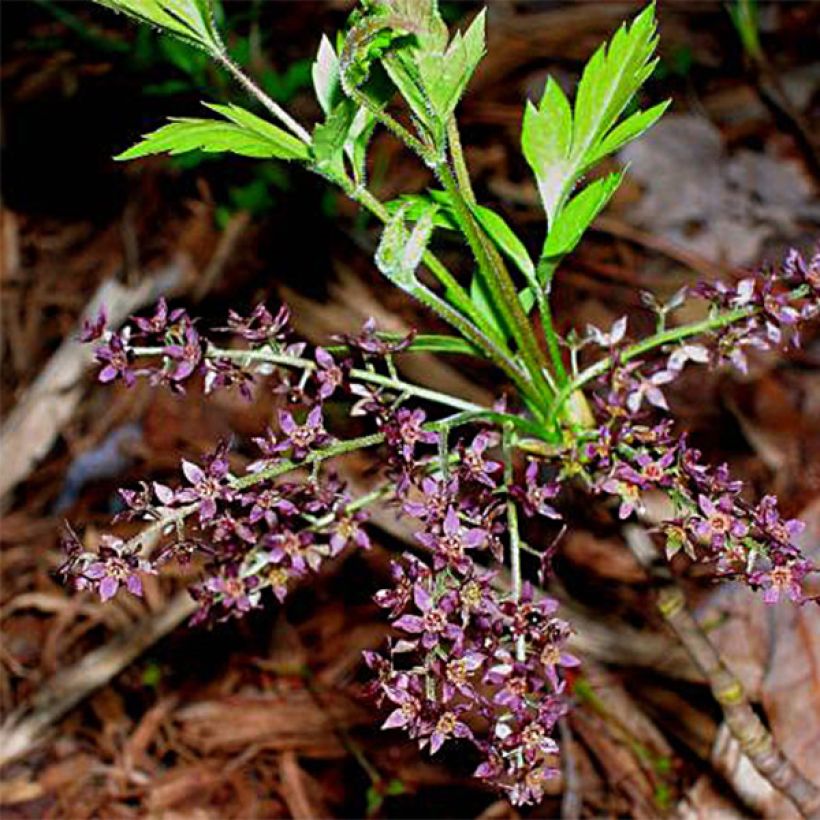

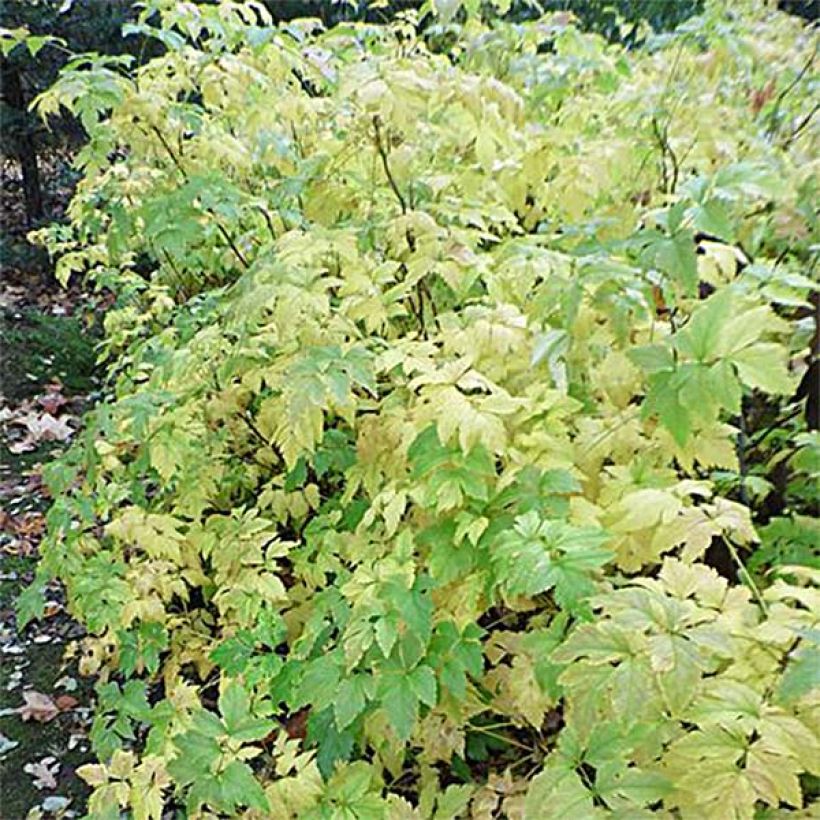

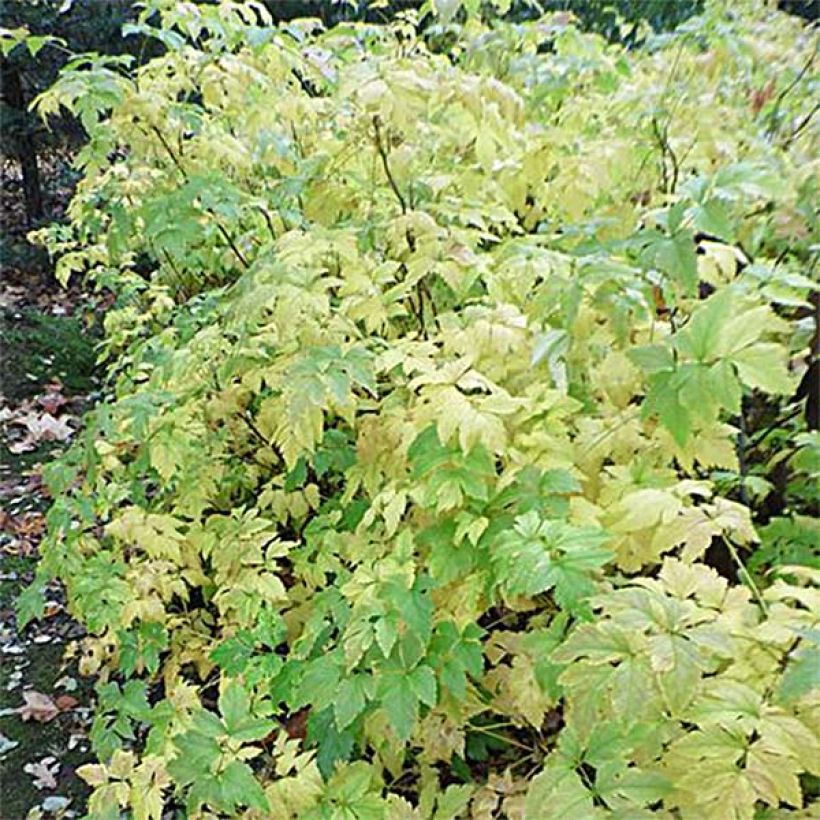

Plant habit
Flowering
Foliage
Botanical data
Xanthorhiza
simplicissima
Ranunculaceae
Yellow Root
North America
Other Shrubs A to Z
Planting and care
Xanthorhiza simplicissima should be planted in spring or autumn, in partial shade, in soil that is rather acidic (pH <6.8), sandy or humus-rich and which remains very moist or even damp. Choose a shady or partially shaded location. Pruning in early spring will give this exuberant shrub a neater appearance and a more compact habit.
Planting period
Intended location
Care
-
, onOrder confirmed
Reply from on Promesse de fleurs
Summer-flowering shrubs
Haven't found what you were looking for?
Hardiness is the lowest winter temperature a plant can endure without suffering serious damage or even dying. However, hardiness is affected by location (a sheltered area, such as a patio), protection (winter cover) and soil type (hardiness is improved by well-drained soil).

Photo Sharing Terms & Conditions
In order to encourage gardeners to interact and share their experiences, Promesse de fleurs offers various media enabling content to be uploaded onto its Site - in particular via the ‘Photo sharing’ module.
The User agrees to refrain from:
- Posting any content that is illegal, prejudicial, insulting, racist, inciteful to hatred, revisionist, contrary to public decency, that infringes on privacy or on the privacy rights of third parties, in particular the publicity rights of persons and goods, intellectual property rights, or the right to privacy.
- Submitting content on behalf of a third party;
- Impersonate the identity of a third party and/or publish any personal information about a third party;
In general, the User undertakes to refrain from any unethical behaviour.
All Content (in particular text, comments, files, images, photos, videos, creative works, etc.), which may be subject to property or intellectual property rights, image or other private rights, shall remain the property of the User, subject to the limited rights granted by the terms of the licence granted by Promesse de fleurs as stated below. Users are at liberty to publish or not to publish such Content on the Site, notably via the ‘Photo Sharing’ facility, and accept that this Content shall be made public and freely accessible, notably on the Internet.
Users further acknowledge, undertake to have ,and guarantee that they hold all necessary rights and permissions to publish such material on the Site, in particular with regard to the legislation in force pertaining to any privacy, property, intellectual property, image, or contractual rights, or rights of any other nature. By publishing such Content on the Site, Users acknowledge accepting full liability as publishers of the Content within the meaning of the law, and grant Promesse de fleurs, free of charge, an inclusive, worldwide licence for the said Content for the entire duration of its publication, including all reproduction, representation, up/downloading, displaying, performing, transmission, and storage rights.
Users also grant permission for their name to be linked to the Content and accept that this link may not always be made available.
By engaging in posting material, Users consent to their Content becoming automatically accessible on the Internet, in particular on other sites and/or blogs and/or web pages of the Promesse de fleurs site, including in particular social pages and the Promesse de fleurs catalogue.
Users may secure the removal of entrusted content free of charge by issuing a simple request via our contact form.
The flowering period indicated on our website applies to countries and regions located in USDA zone 8 (France, the United Kingdom, Ireland, the Netherlands, etc.)
It will vary according to where you live:
- In zones 9 to 10 (Italy, Spain, Greece, etc.), flowering will occur about 2 to 4 weeks earlier.
- In zones 6 to 7 (Germany, Poland, Slovenia, and lower mountainous regions), flowering will be delayed by 2 to 3 weeks.
- In zone 5 (Central Europe, Scandinavia), blooming will be delayed by 3 to 5 weeks.
In temperate climates, pruning of spring-flowering shrubs (forsythia, spireas, etc.) should be done just after flowering.
Pruning of summer-flowering shrubs (Indian Lilac, Perovskia, etc.) can be done in winter or spring.
In cold regions as well as with frost-sensitive plants, avoid pruning too early when severe frosts may still occur.
The planting period indicated on our website applies to countries and regions located in USDA zone 8 (France, United Kingdom, Ireland, Netherlands).
It will vary according to where you live:
- In Mediterranean zones (Marseille, Madrid, Milan, etc.), autumn and winter are the best planting periods.
- In continental zones (Strasbourg, Munich, Vienna, etc.), delay planting by 2 to 3 weeks in spring and bring it forward by 2 to 4 weeks in autumn.
- In mountainous regions (the Alps, Pyrenees, Carpathians, etc.), it is best to plant in late spring (May-June) or late summer (August-September).
The harvesting period indicated on our website applies to countries and regions in USDA zone 8 (France, England, Ireland, the Netherlands).
In colder areas (Scandinavia, Poland, Austria...) fruit and vegetable harvests are likely to be delayed by 3-4 weeks.
In warmer areas (Italy, Spain, Greece, etc.), harvesting will probably take place earlier, depending on weather conditions.
The sowing periods indicated on our website apply to countries and regions within USDA Zone 8 (France, UK, Ireland, Netherlands).
In colder areas (Scandinavia, Poland, Austria...), delay any outdoor sowing by 3-4 weeks, or sow under glass.
In warmer climes (Italy, Spain, Greece, etc.), bring outdoor sowing forward by a few weeks.

































